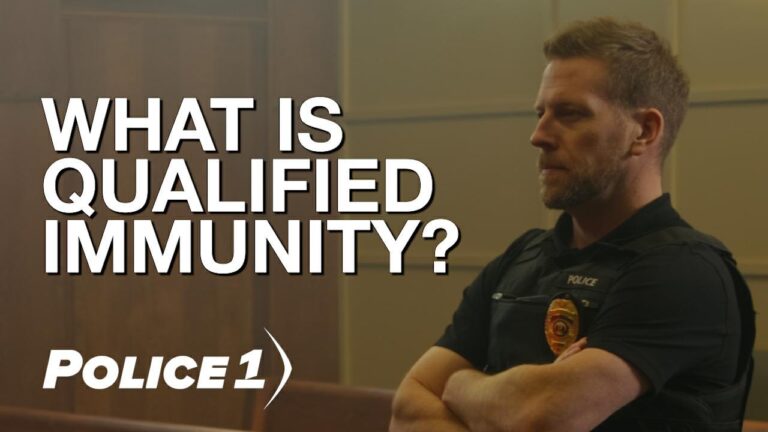Table of Contents
- Qualified Immunity’s Role in Legal Protections for Police Use of Tasers on Students
- Evaluating the Impact of Taser Use in Educational Settings on Student Rights and Safety
- Judicial Interpretations Shaping Accountability in Tasering Cases Involving Minors
- Policy Recommendations for Balancing Law Enforcement Authority and Student Protection
- To Wrap It Up
Qualified Immunity’s Role in Legal Protections for Police Use of Tasers on Students
Qualified immunity serves as a pivotal legal doctrine shielding law enforcement officers from personal liability when performing their duties, provided their actions do not violate “clearly established” statutory or constitutional rights. In incidents involving the use of Tasers on students, this protection becomes highly significant. Courts often scrutinize whether the officer’s application of a Taser was reasonable under the circumstances and whether existing legal precedents clearly prohibited such use. This nuanced legal barrier means that even when concerns about excessive force arise, plaintiffs face substantial challenges overcoming qualified immunity defenses.
Key considerations set the framework for evaluating qualified immunity in these cases, including:
- The immediacy and severity of threat perceived by the officer
- The age and vulnerability of the student involved
- Whether de-escalation alternatives were feasible and attempted
- Existing legal standards on non-lethal force and juvenile protections
The evolving nature of case law indicates a growing judicial awareness about the unique status of students and minors, which can influence the balance of qualified immunity’s application. Still, the doctrine remains a formidable defense, often limiting accountability unless clear constitutional violations can be substantiated.
Evaluating the Impact of Taser Use in Educational Settings on Student Rights and Safety
In recent discussions surrounding law enforcement’s role in schools, the application of qualified immunity to officers deploying Tasers on students has sparked significant debate. While proponents argue that this legal protection shields officers acting in good faith during volatile encounters, critics point out the blurred lines when it comes to the rights and safety of minors. The physiological and psychological impacts on students exposed to such force can be profound, raising urgent questions about appropriate use-of-force standards within educational environments. Furthermore, the lack of transparency around incidents often complicates efforts to hold individuals accountable and protect students’ constitutional rights.
Key concerns highlighted by experts and advocacy groups include:
- Disproportionate application of force against marginalized student populations
- Insufficient training for officers on adolescent behavior and de-escalation techniques
- Potential long-term trauma resulting from Taser deployments in non-threatening situations
- Challenges in balancing school safety with upholding civil liberties
As school districts navigate these complexities, there is a mounting call for transparent policies, rigorous oversight, and alternative approaches that prioritize conflict resolution without resorting to force. The conversation extends beyond legal immunity, reaching into the core values of ensuring safe and equitable learning environments for all students.
Judicial Interpretations Shaping Accountability in Tasering Cases Involving Minors
Courts are increasingly scrutinizing the delicate balance between law enforcement’s use of Tasers on minors and the protections afforded under qualified immunity. Judicial interpretations highlight that while officers may benefit from immunity facing allegations of excessive force, this protection is not absolute, particularly when the use of Tasers on students lacks clear justification. Recent rulings emphasize the need to assess the reasonableness and proportionality of such force in light of the unique vulnerability of minors, and whether the officer violated established rights that were “clearly” defined at the time of the incident. This shift reflects a growing judicial willingness to hold law enforcement accountable when their actions disregard the special considerations required when interacting with young individuals.
Key judicial principles emerging from these cases include:
- Heightened scrutiny of the use of force on minors: Courts recognize students as a protected group, necessitating heightened care in evaluating police conduct.
- Clarification of objective reasonableness: Determining whether the officers’ decision to deploy a Taser aligns with the totality of circumstances, including threat level and alternatives available.
- Limits on qualified immunity: Emphasizing that immunity should not shield clearly unconstitutional use of force, especially in schools or similar environments.
Policy Recommendations for Balancing Law Enforcement Authority and Student Protection
To create a more equitable framework, it is essential that lawmakers recalibrate qualified immunity standards specifically concerning incidents involving students. This approach should include clear limitations on the use of force, emphasizing de-escalation and prioritizing the safety and rights of minors within educational settings. Implementing mandatory, regular training programs for law enforcement officers focused on adolescent psychology, crisis intervention, and culturally responsive communication can significantly reduce unnecessary confrontations that escalate into the use of tasers or other forceful measures. Furthermore, establishing independent oversight committees to review incidents involving police use of force against students would enhance accountability and restore community trust.
- Limit Taser Use: Restrict deployment to only situations presenting clear, immediate threats, excluding typical school disciplinary encounters.
- Transparent Reporting: Require detailed incident documentation and public disclosure regarding all uses of force, especially involving underage individuals.
- Restorative Practices: Promote alternatives to arrest and suspension by integrating restorative justice methods as part of school safety policies.
By adopting these reforms, policymakers can strike a critical balance that respects both the legal protections afforded to law enforcement and the imperative to safeguard students from disproportionate or unnecessary force. Such measures not only prevent harm but also contribute to a healthier school climate where students feel secure and valued, fostering an environment conducive to learning and personal growth.
To Wrap It Up
In conclusion, the intersection of qualified immunity and the use of Tasers by police on students remains a complex and contentious issue. As legal standards continue to evolve, the balance between protecting law enforcement officers and safeguarding the rights of young individuals is under increasing scrutiny. Policymakers, educators, and community leaders must engage in ongoing dialogue to ensure that accountability and public safety are both upheld in school environments. Moving forward, clear guidelines and transparent oversight will be essential in addressing the challenges posed by qualified immunity in cases involving the use of force on students.Check Our Other Blogs
- StunGun – Your Trusted Source for Stun Guns, Laws, and Self-Defense Tips
- PepperSprayLaws – Your Trusted Resource for Pepper Spray Information
- StunGunLaws – Your Trusted Guide to Stun Gun Legality and Safety





